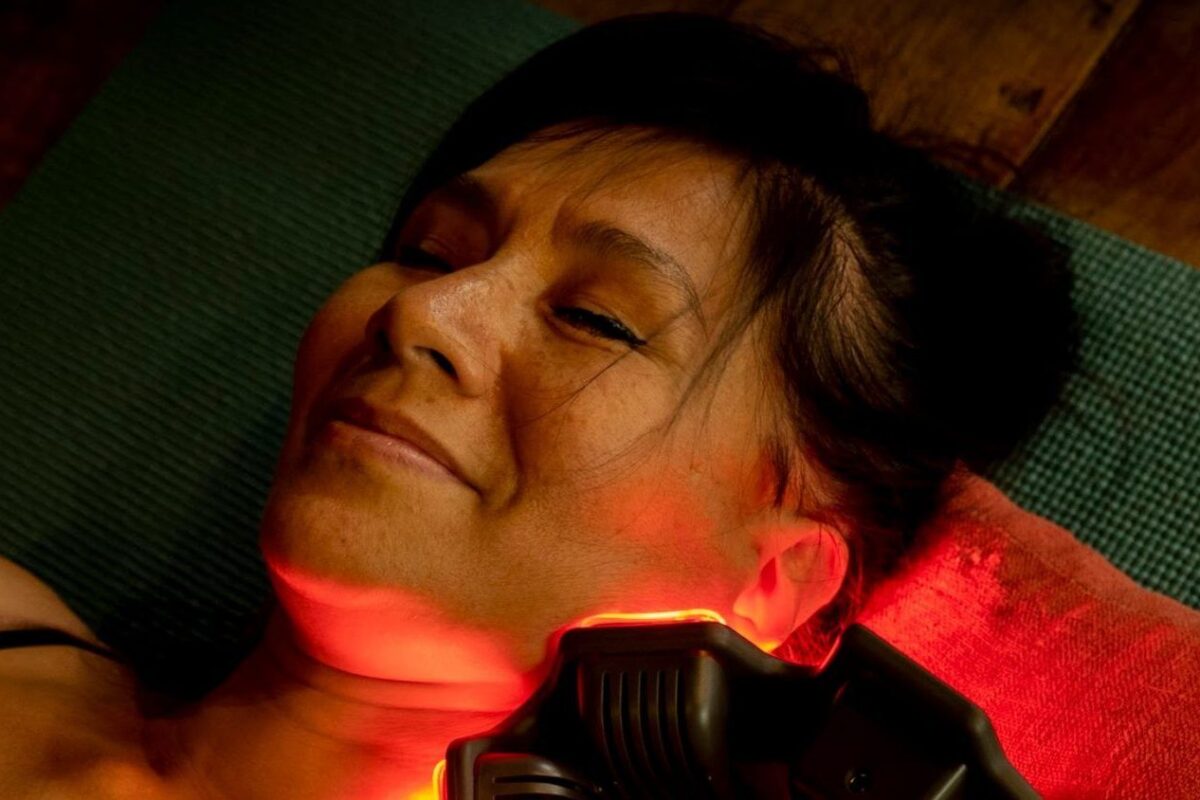Your cart is currently empty!
Does Red Light Therapy Help With Anxiety?

Written by
There are several studies showing that near-infrared and red light therapy help with anxiety symptoms.
There are different types of anxiety. Some are natural reactions to extreme life situations, while others can have completely different causes, symptoms, and manifestations.
According to the Anxiety and Depression Association of America:
“Anxiety disorders are the most common mental illness in the U.S., affecting 40 million adults in the United States age 18 and older, or 18.1% of the population every year.”
So far, the most positive results in treating anxiety disorders are achieved with therapy, medication, and alternative treatment options, such as yoga, meditation, and acupuncture.
Science is always on the lookout for new promising treatments for this type of disorder and now red light therapy is here, showing excellent results in various studies.
What Does Red Light Therapy Do to Your Mood and Anxiety?
In simple terms, red light therapy eliminates the lack of energy that accompanies low mood and anxiety. Red light therapy can increase the efficacy and integrity of mitochondria – the ‘powerhouse’ of the cell. This energy is then distributed where it is needed the most.
One of the ways NIR may support your mental health is by stimulating areas of the brain linked to certain types of depression and anxiety. Namely, dlPFC and vmPFC play critical roles in the pathophysiology of depression.
This doesn’t mean that you need to stimulate these areas directly in order to achieve such effects. Moreover, there are studies on mice showing that red light therapy had significant effects on neurocognitive behavior even when the treatment doesn’t include direct exposure to the head.
With well-calculated exposure to RLT and NIR, it is possible to modulate appropriate brain areas, so you can treat and improve depression and anxiety symptoms.
How?
Cassano and his team showed that red light therapy to have the following direct and systemic effects that lead to reducing anxiety and mood improvement:
- Increased energy
- Harmonising circadian rhythms
- Reducing inflammation
- Reducing oxidative stress
- Improving neurogenesis and synaptogenesis
How to Use Red Light Therapy for Anxiety?
In order to get the benefits from red light therapy, it is not necessary to place the device on the head. There is evidence that a systemic and holistic approach to RLT treatments also can be effective in reducing anxiety.
In other words, it is possible to treat one area of the body with red light therapy and experience the benefits through your body and mind as a whole due to remote tissue conditioning, if you treat your gut with NIR and RLT, you may experience mood improvements and alleviation of anxiety and depression symptoms.
How does that happen?
One of the possible explanations is that there are fully functional mitochondria circulating in our bloodstream. These mitochondria are not inside any of cells, but freely circulate our bodies. With that in mind, it is not difficult to imagine that such mitochondria could transfer energy they receive in one area, to a remote location in the body.
Two Studies Proving Near-Infrared and Red Light Therapy Help with Anxiety
There are already studies showing that red light therapy has significant therapeutic effects on people suffering from anxiety. Here are two such studies explained in more detail:
Photobiomodulation Used for Generalized Anxiety Disorder
A study tested whether photobiomodulation with near-infrared light (NIR) would show any effects for patients suffering from Generalized Anxiety Disorder (GAD). The study showed significant correlation between the NIR treatments and the improvement of the GAD symptoms.
The idea was to test the exposure of NIR by placing a red light therapy headband with LED lights to the broad area of the forehead of patients.
This test included 15 patients over a period of 8 weeks. All of the patients suffered from GAD. To monitor the effect of NIR, the outcome was measured in changes on three scales:
- Hamilton Anxiety Scale (SIGH-A)
- Clinical Global Impressions-Severity (CGI-S)
- Pittsburgh Sleep Quality Index (PSQI)
This study showed that NIR can be a promising new therapy for anxiety disorders and that double-blind studies should be the next step.
Psychological Benefits of a Single NIR Anxiety Treatment
A pilot included 10 patients. Out of this number, all the patients suffered from major depression, while 9 of them also suffered from anxiety and 7 had a history with substance abuse.
The study showed that, after two weeks of treatment, 6 out of 10 patients showed improvement with their depression while 7 out of 10 had reduced anxiety.
Here are the process and the result of the study.
To determine the effects of the NIR, the researchers relied on the Hamilton Depression Rating Scale (HAM-D), Hamilton Anxiety Rating Scale (HAM-A) and a Positive and Negative Affect Scale (PANAS). PANAS determines a person’s positive and negative affect and how a person feels at any given moment.
The subjects completed the PANAS and then underwent 4-minute treatments with NIR. After treatment, they repeated PANAS and did the same after 2 and 4 weeks.
After two weeks, 6 patients showed better results on HAM-D, and as many as 7 scored better on HAM-A. Even immediately after the treatment, PANAS scored better with most of the subjects. There were no side effects.
These two studies show that red light therapy looks like a promising new, drug-free treatment for both anxiety and depression. There are many more studies and even individual cases that lead to the same conclusion.
Red light therapy has no known side effects and while it is not a replacement to talk therapy and prescribed medication, it offers a new and complementary therapy modality for anxiety and depression that is safe, and easy to use at home for optimal self-care.
Discover how the FlexBeam works and how it can help you achieve optimal health.
